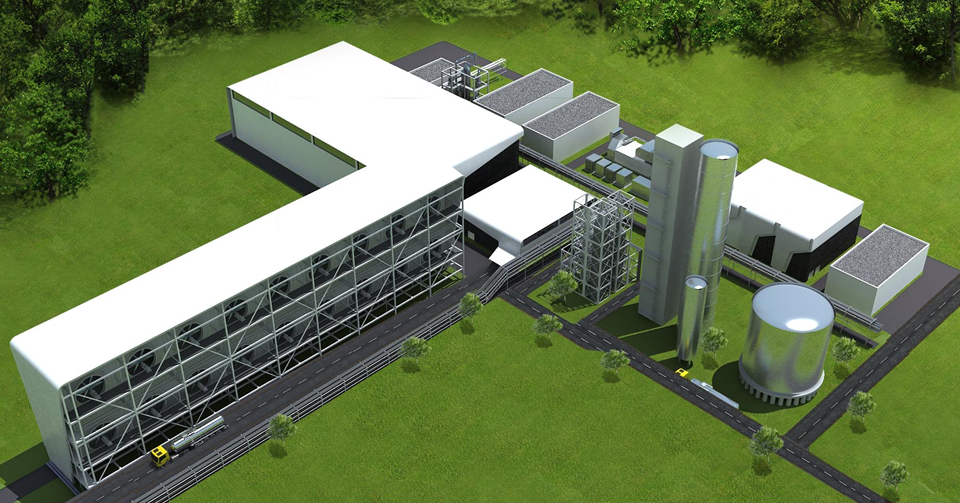Turning carbon dioxide into fish food?! It can be done.
Climeworks can capture around 900 tons of carbon dioxide annually with this one plant alone.
If you’d told me a month ago there’s a company working on removing carbon dioxide from the atmosphere and using it to feed fish, lots and lots of them, I’d have told you to go back and get your story straight. But Novonutrients, a California startup, is on the verge of doing exactly that.
“There are many carbon capture companies. But only a few can take carbon and turn this waste into a valuable by-product.”
This innovative company takes untreated flue gas from industrial emitters and turns it into Novomeal, a fish food protein that could eventually replace the more than 400 billion small fish used to feed their larger aquatic brethren every year. This flue gas-to-fish food transformation is just one of many examples of the ways carbon removal companies are angling to become marketable.
Since 2015, the number of carbon-removal startups have exploded thanks to the development of a new technology known as direct air capture (DAC). The huge advantage of this new technology lies in its ability to not only capture excess carbon dioxide, but put it to better use elsewhere. Companies are using DAC, and other methodologies, to reconfigure carbon into carbonated water, fuel, plastic, carbon fiber, and concrete. “There are many carbon capture companies,” says David Tze, CEO of NovoNutrients, which does not use DAC. “But only a few can take carbon and turn this waste into a valuable by-product.” For the first time since the creation of giant power plant scrubbers in the 1970s, which mitigate the sulfur dioxide output of coal plants but are tremendously costly, the carbon capture model shows a promise of market viability.
Carbon Engineering is among many new companies remaking the carbon capture model into something marketable. In its case it uses direct air capture to convert excess CO2 into clean fuel.
“Many companies have begun taking for granted the need to reduce their CO2 emissions. Some anticipate higher carbon taxes and realize they need to start preparing now.”
Supporters note that direct-air capture companies offer the benefit of combatting climate change while reinvigorating the economy by adding jobs. And the demand for their product is promising, according to Tze. “Many companies have begun taking for granted the need to reduce their CO2 emissions,” he says. “Some anticipate higher carbon taxes and realize they need to start preparing now.”
Part of the solution
Carbon capture is an innovative— and essential — response to what experts have long said: effectively fighting climate change requires more than developing green alternatives to fossil fuels and preventing emissions. According to a recent Intergovernmental Panel on Climate Change (IPCC) report, limiting warming to 1.5º Celsius, a goal many experts already believe is now impossible, will hinge on the success of some kind of carbon dioxide removal technology.
These following companies are cutting-edge, innovative, and interesting— and represent an approach that could be critical to ensuring the future of the planet.
Climeworks. This Swiss company uses machines that chemically stick carbon dioxide to a filter, release clean air into the atmosphere, and then turn the trapped CO2 into the “fizz” in bottled water and soda. Early clients include VALSER and Coca Cola HBC, which are buying carbonation for the bubbles they use in soft drinks. Spokespeople from these companies laud Climeworks for helping them minimize their ecological footprint.
While selling the carbonation in fizzy water is a good start, Climeworks understands it needs to find larger applications for its technology. The company is hoping to move the price of CO2 capture low enough that people can pay to have their individual carbon emissions reversed. One of the company’s founders, Jay Wurzbacher, told the New York Times he dreams of one day creating a Climeworks location-based travel app that allows users to pay the company to offset the carbon footprint of each flight they take. In the nearer future, however, Climeworks plans to scale up its DAC capacity in Iceland.
Carbon Engineering. This Canadian company uses the same DAC technology as Climeworks, but has a different use for its sequestered carbon dioxide: the production of clean, carbon-neutral fuel. Its technology combines atmospheric CO2 and hydrogen split from water into gasoline, diesel, or Jet-A fuel. This sustainably produced fuel does not require any additional technological advances. It can be used to power present-day cars, trucks and airplanes, and also mixed with preexisting fuels to gradually phase them out.
Carbon Engineering recently closed an equity financing round of $68 million, the largest amount to date invested in a direct air capture company.
Carbon Engineering has already secured some high-level corporate investors, such as Chevron and Occidental Petroleum. Bill Gates, also an early investor, named direct air capture in his list of 10 breakthrough technologies in 2019. Carbon Engineering plans to begin a full-scale commercial deployment in 2021.
Novonutrients. The company takes untreated flue gas from industrial emissions, like cement manufacturers, and pipes it into their plant. Basically, it feeds CO2 and other pollutants to microbes, which causes them to grow into a powdered fish food protein. “What we do is a lot like making wine,” says Tze. “In winemaking, it’s yeast taking up the sugar in grape juice, as the source of carbon and chemical energy, and using that to reproduce and grow. In our case, we use bacteria. Our carbon source is untreated industrial emissions of CO2. Our energy source is hydrogen.”
To get a sense of the scale of how Novonutrients could work, one cement manufacturer can throw off four million tons of carbon dioxide emissions in a year, which would allow Novonutrients to produce two million tons of fish meal, or more than a third of the current global supply of high-quality protein meal.
Novonutrients isn’t 100 percent there yet, but it does have a clear path forward. Tze and VP Marketing Director Chris Oakes told me their next stage of advancement focuses on two fronts: input and output.
On the “input” end, they need to find reliable sources of pollutant gases. This shouldn’t be too difficult; they’re planning to partner with large-scale industrial emitters, like cement manufacturers and other large factories. On the “output” end, Novonutrients needs to find a home for its fish food protein. To accomplish this goal, it’s taking rapid steps to move the microbial aquaculture out of the lab and market trial quantities of Novomeal to fish food companies.
Takeaway: Want to participate in the carbon capture movement? Here’s a low-tech idea: Acadia Tucker, climate activist, author, and farmer, advocates a practice known as regenerative gardening, which enables concerned citizens to act as their own miniature carbon capture operation at a smaller scale — in their own backyard. Her book, Growing Perennial Foods: A field guide to raising resilient herbs, fruits & vegetables, is on sale in bookstores, including our own.
Ezra Sassaman is a Stone Pier Press News Fellow from Bar Harbor, Maine.







